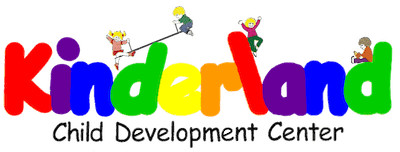Prescription medications and those that are bought over-the-counter (OTC) can be dangerous if they fall into the wrong hands. Particularly if those hands belong to your young children. Children are not small adults. What can be non-harmful to an adult can be toxic to a child. Most dosages for children are based on age and/or weight, and can be lethal if too much is taken.
Most often, problems with medications and children stem from mistakes made by parents. Recent batches of OTC liquid medication from Perrigo were recalled because some packages contained a dosage cup with incorrect markings. If parents have doubts about dosages, they can usually request a dropper from the pharmacy to make sure their children receive the right dosage of medicine. Most pharmacies give them away. Do not use a teaspoon or tablespoon taken from your silverware drawer.
Many OTC medications have a broad safety range, but some, like iron and acetaminophen, can be potentially dangerous if over-dosed in children.
Other things parents need to watch for include making sure to separate different medicines if they have multiple children on medications and being sure to dispose of used medication. It is very important, if there are multiple children in the family, to keep medications sorted. A lot of times you will be looking for medicines late at night, and it helps if you have one child’s medications in one spot, and the others in another spot. And always keep medications in their original bottles.
In addition to keeping medications out of the reach of children, parents should also make sure that children do not have access to potentially dangerous adult medications that look like a toy or candy. A nicotine patch can be toxic to a child. Never refer to any medication as candy, whether it be a child’s or an adults. Very problematic are the vitamins that are now coming out as gummies. They look and taste like candy, but a child consuming an adult’s bottle of gummie vitamins can become very ill.
No medication should be used beyond its expiration date. Routinely go through your medicine cabinet and check expiration dates, and throw out anything that is expired. If there is ever a question about whether it is safe or not to use a particular medication, call a pharmacist. That is what they are there for. Often in communities there are days set aside for turning in medications that are expired or no longer being used, such as police departments, pharmacies, or hospitals. Keep alert for announcements. To dispose of medications yourself, put the medication in a sealable plastic bag. If it is dissolvable, add water. Also add kitty litter or coffee grounds to make it less attractive to kids. And don’t flush medications down the toilet. There is a big concern of antibiotics and hormones being unnaturally placed into our environment.
Here are safety tips concerning medicine for children from Safe Kids Worldwide:
Storing Medicines Safely:
- Make sure all medications, especially those for adults, are out of the reach of children. Three out of four emergency room visits for medicine poisoning involve children getting into medicine belonging to an adult.
- Consider places where children can get hold of medication, such as night stands or purses.
- Consider products you might not consider medicine, such as eye drops or vitamins.
- Close medicines tightly each time after they are used. Remember that child-resistant isn’t the same as childproof. Given enough time and energy, a child might be able to get into the medication.
- Be alert to medications visitors may bring into your home.
- Be alert to where medications are stored in places your child visits, such as relatives’ homes. Also be aware that in homes where there are no longer children, the adults may not have childproof containers.
- Store medicines in a safe place after the medicine is taken, even if it will be taken again in a short time.
Giving Medicine Safely:
- Use the dosing device that comes with the medicine or one that is supplied by a caregiver or pharmacist. Kitchen spoons aren’t a uniform size.
- Keep medicines in their original packages.
- Read directions each time you get a medicine. Even if it is one you’ve used before, directions sometimes change, or now your child is a different age and weight.
- Don’t give more than the directions recommend, even if the child is very sick. More medicine won’t make the child feel better and faster, and it may cause harm.
- Read labels to know the active ingredients. Don’t give your child more than one medicine with the same active ingredient because it puts your child in danger of an overdose.
Communicating with Caregivers:
- If more than one person is giving a child medication, communicate so that the child doesn’t get the wrong dosage.
- Write clear instructions, and if handing over to another caregiver, the time the last dose was given, and what time the next dose(s) are due. Never assume the person will remember what they have been told.
Always remember that children are curious and are mimics. If they see you taking pills, then they will want to do so as well, especially if they look yummy like candy. Always make sure all medications are stored well out of reach of curious little hands, even their daily children’s vitamins if you are giving them.
